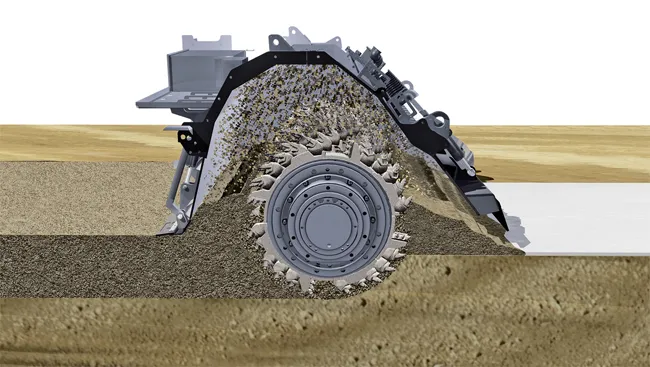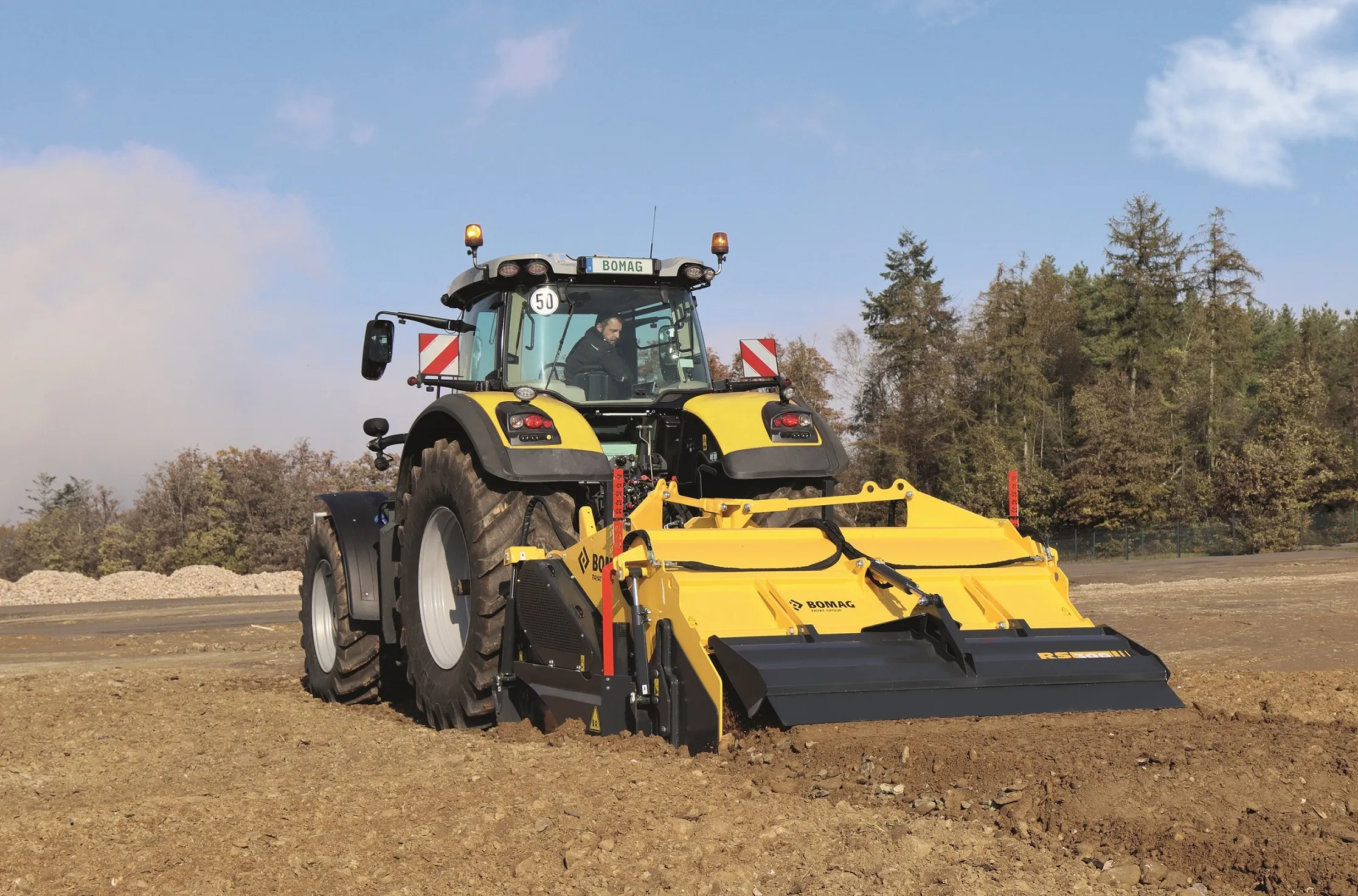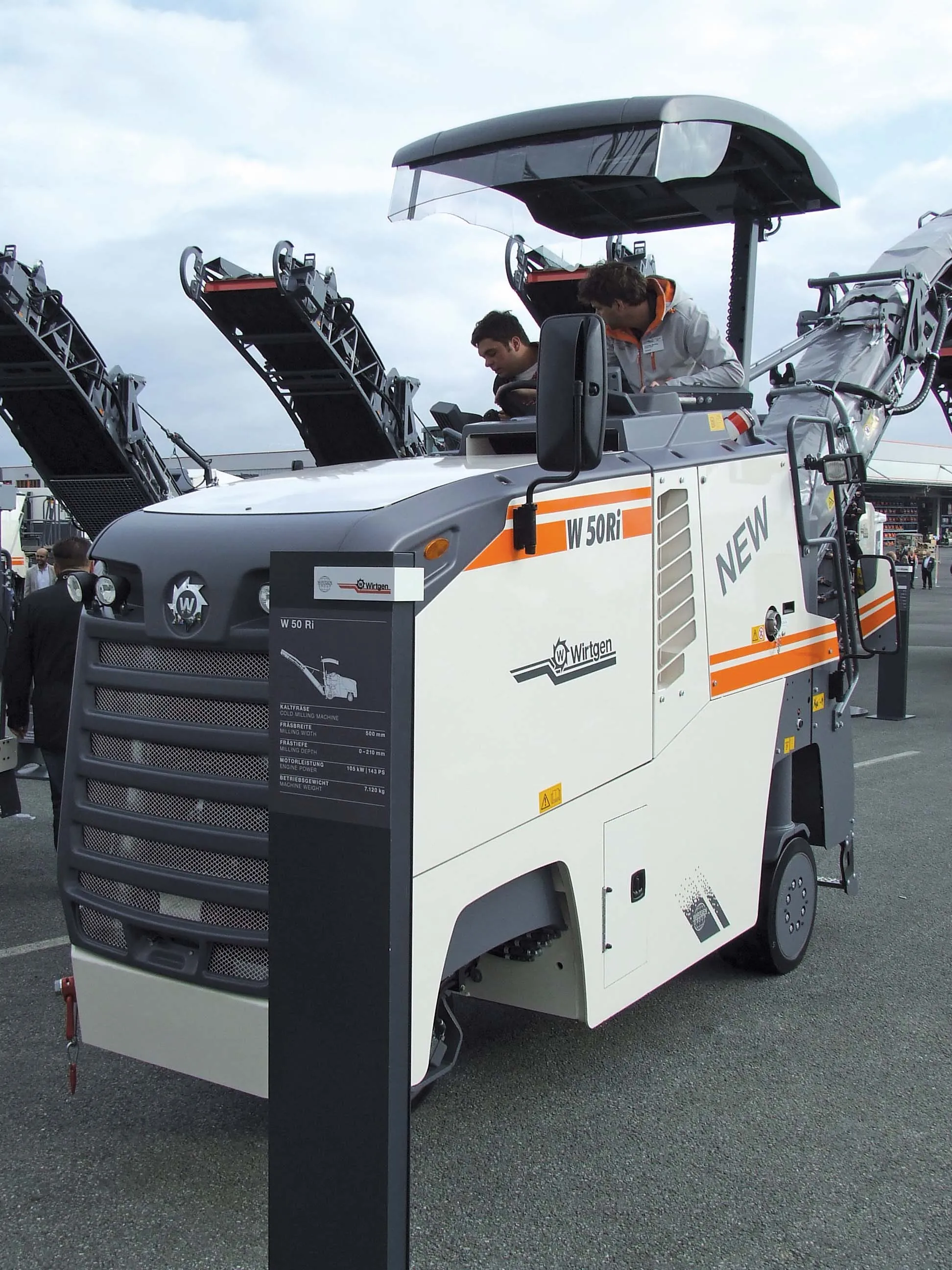
The targeted addition of stabilising agents can help reduce the moisture content of soil, which is vital for roadworks. Compared to exchanging the entire soil, soil stabilisation is an economical and resource-saving method. Cost savings result from simpler job-site logistics that includes fewer truck trips and shorter construction periods.
Resources are also conserved because all of the existing soil is used in the stabilisation process. Only stabilising agents such as lime or cement are added or a combination of both is used in the form of a mixed stabilising agent.
The homogeneous mixture of soil and stabilising agent that is produced offers a high load-bearing capacity and volume stability as well as lasting resistance to water and frost. Typical applications include the construction of paths, roads, motorways, parks, sports grounds, industrial and industrial plants, airfields, dams, backfilling and landfills.
Improvement vs stabilisation
In soil stabilisation projects, a distinction is made between improving the soil and stabilising it. Lime improves the paving properties and compactability of wet, cohesive soil. This is known as soil improvement.
However, if the aim is to stabilise soil, then soil cement is used because it enhances the load-bearing capacity, volume stability and resistance to water and frost. Soil can be stabilised or homogenised even without the use of stabilising agents.
In the homogenisation process, the powerful milling and mixing rotor of the Wirtgen soil stabiliser granulates the native soil without the addition of stabilising agents and loosens it. While a grader profiles the homogeneous soil prepared this way, rollers for soil compaction take care of the compaction process.
A machine train is generally required if the properties of the soil are to be lastingly improved. This begins with a binding agent spreader that deposits the stabilising agent evenly, followed by a Wirtgen soil stabiliser. The WR 250 uses its milling and mixing rotor to mix the soil homogeneously with the pre-spread lime. A pressurised scraper on the rear milling drum flap ensures that the treated material is smoothed evenly. While a grader profiles the soil mixture, rollers for soil compaction ensure optimum compaction.
Stabilisation with cement creates water-bound base courses. The binding agent is laid by a towed spreader, which is followed by a water tanker. Behind it, the milling and mixing rotor of the Wirtgen soil stabiliser mixes the soil with the pre-spread cement to form a homogeneous mass. At the same time, water is sprayed into the mixing chamber by means of an injection bar. Here, too, graders profile the treated material and rollers complete the job by ensuring optimum compaction.
The WR 250 in the US
In the US, Wirtgen’s applications expertise played a part in a soil stabilisation project on the Interstate 69 south of the city of Indianapolis. The newly embanked earth of the new approach road first had to be stabilised to create the necessary load bearing capacity for the asphalt pavement.
The contractor, Specialties Company, used lime as a stabilising agent. Lime immediately reduces the water content in the soil and binder mix. This ultimately improves compactability and increases the load-bearing capacity of the treated soil, explains Jamie Cardiff, equipment manager at Specialties Company.
Specialties Company also chose the WR 250 wheeled soil stabiliser. The 571kW powerhouse, that can be used in other applications such as cold recycling for granulating asphalt, is the most powerful machine in the WR generation. It is specially designed for the stabilisation of heavy and boggy terrain. The unit is often handling up to 15,000m² in soil stabilisation applications a day.
After lime had been pre-spread, the power and traction of the WR 250 enabled it to work through the heavy and sometimes deep soil. The WR mixed the soil and binding agent homogeneously across the entire working width of 2.4m to a depth of 30cm. “The multifunctional joystick on the right armrest gives me easy control of all the main basic functions,” says operator Richard Clark.
One of the challenges was the uneven condition of the earth, which varied from very firm to loose, noted Cardiff. “The milling speeds can be controlled from the operator’s cabin, so our machine operators were able to respond directly to the frequent changes in soil conditions,” he says. “This ensured a high mixing quality at all times.”
Cardiff says that it took only five days to complete the stabilisation work and lay the load-bearing base for the approach road to Interstate 69. Trucks carrying material for paving the asphalt layers began to roll onto the job site only a short while later, he said.







